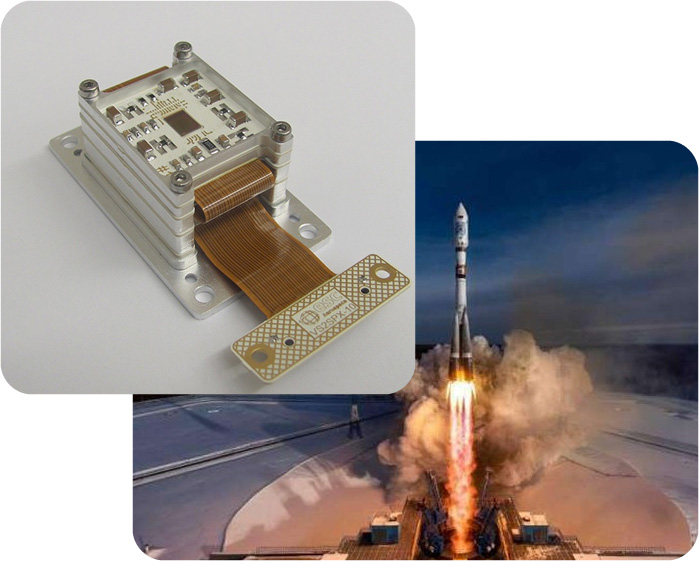Space Dosimetry and Nuclear Propulsion
Space missions involving long-duration human presence and advanced propulsion systems demand robust radiation monitoring and shielding strategies.
Our group develops radiation-hard components and monolithic pixel detectors tailored for space dosimetry.
We engage in end-to-end system simulations, detector calibrations, and environmental modeling in cooperation with local as well as international research institutes and industry partners.
As part of emerging efforts to address legacy nuclear systems in orbit, we contribute to mission concepts aiming to characterize and monitor defunct nuclear reactors in Earth orbit using gamma-ray and alpha spectroscopy, radiation mapping, and optical inspection to better understand the long-term effects of the space environment on nuclear-powered spacecraft.
![]() Ing. Radek Novotný, Ph.D.
Ing. Radek Novotný, Ph.D.
radek.novotny@fjfi.cvut.cz
![]() Ing. Michal Marčišovský, Ph.D.
Ing. Michal Marčišovský, Ph.D.
Michal.Marcisovsky@fjfi.cvut.cz
Space Weather Monitoring and Dosimetry
We are pioneering SpacePix – radiation-hard Monolithic Active Pixel Sensors (MAPS) to monitor the space radiation environment. These silicon-based pixel detectors are built to withstand intense cosmic radiation and provide granular tracking of charged particles. By optimizing the sensor design for low power and high tolerance, our group produces compact dosimeters suited for harsh space conditions, enabling continuous space weather monitoring. We conduct simulations (using Geant4 and Allpix2) to model how cosmic rays and solar particles interact with shielding and our sensors, ensuring the detectors can reliably measure dose rates and particle spectra in orbit. Rigorous calibration procedures are implemented, using particle beams and radioactive sources on Earth to characterize sensor response across a range of energies and particle types.

We actively demonstrate these technologies through real and conceptual orbital deployments. For instance, our instruments have flown on nanosatellite missions: a recent radiation monitor on the VZLUSAT-2 CubeSat mapped the South Atlantic Anomaly by recording charged particle counts over Earth’s orbit. Such data validates our simulations and informs shielding needs for spacecraft electronics.

KEY TASKS
Radiation-Hard Pixel Sensors: we develop CMOS MAPS detectors for space, offering fine resolution and low power in a compact, lightweight form suitable for harsh radiation environments.
Simulation & Shielding Design: using Geant4 and Allpix2, we simulate radiation transport to optimize shielding and detector packaging, ensuring reliable measurements while protecting sensitive electronics.
Collaborative Testing & Deployment: we work with ESA, universities, and industry partners to validate and integrate these sensors through environmental modeling, beam tests, and flight-ready implementations.
Nuclear Propulsion
The second pillar of our research focuses on nuclear propulsion, particularly radiation shielding for spacecraft equipped with onboard reactors or radioisotope power systems. We develop lightweight, effective shielding solutions for both nuclear electric (NEP) and nuclear thermal propulsion (NTP), using advanced simulations to identify optimal materials and geometries that minimize crew and electronics exposure to neutron and gamma radiation. Our layered designs combine high-Z materials (e.g. tungsten alloys) with hydrogen-rich low-Z materials (e.g. lithium hydride, polymers), often in shadow shield configurations. These concepts are optimized through Geant4 simulations and sensitivity analyses tailored to mission parameters such as reactor power, duration, and crewed vs. uncrewed operation. This work also informs broader mission planning and reactor design.
We contributed to ESA’s RocketRoll, supporting the development of next-gen nuclear space systems. In RocketRoll, we collaborated with OHB Czechspace and the University of Stuttgart to design shielding for a 10MWth reactor-equipped NEP spacecraft, using simulation-driven design to meet ESA’s safety criteria.
Another avenue of our work is the REXIS mission concept — an inspection satellite designed to approach defunct nuclear-powered spacecraft in Earth orbit. Equipped with non-invasive diagnostics such as alpha/gamma spectrometers and high-resolution imagers, REXIS would assess aging reactor cores from a safe distance.
KEY TASKS
Advanced Shield Design & Optimization: we design lightweight, multi-layer “shadow shields” using hydrogen-rich and high-Z materials, optimized via Geant4 to meet mission-specific dose limits with minimal mass. Solutions span RTGs to megawatt-class reactors for both crewed and uncrewed missions.
ESA Program Participation: our team supports ESA projects like RocketRoll and Argonaut by providing radiation analyses and shield designs for nuclear propulsion and surface power systems, collaborating with partners like OHB and the University of Stuttgart.
REXIS – Inspecting Legacy Reactors: we are developing the REXIS satellite concept to inspect defunct nuclear spacecraft using remote alpha/gamma spectroscopy and imaging, contributing to orbital safety and advancing radiation sensing technologies.
